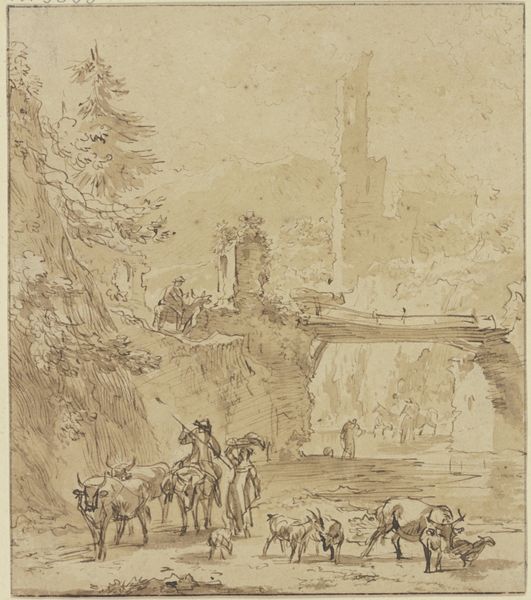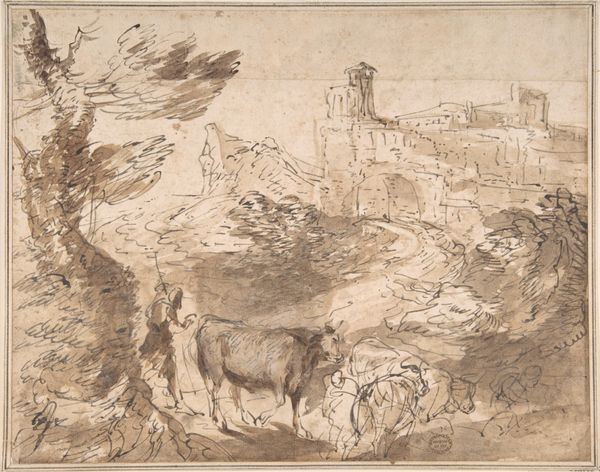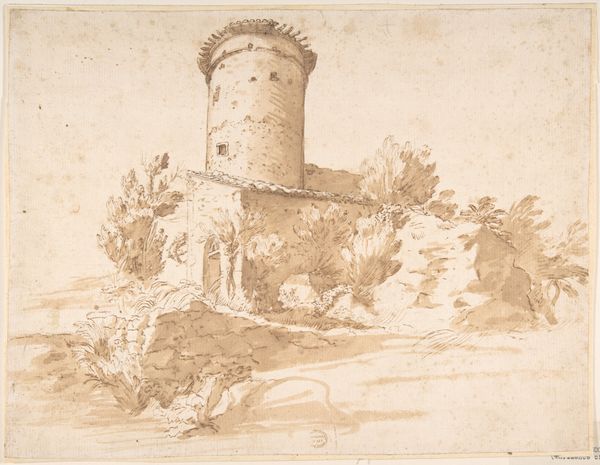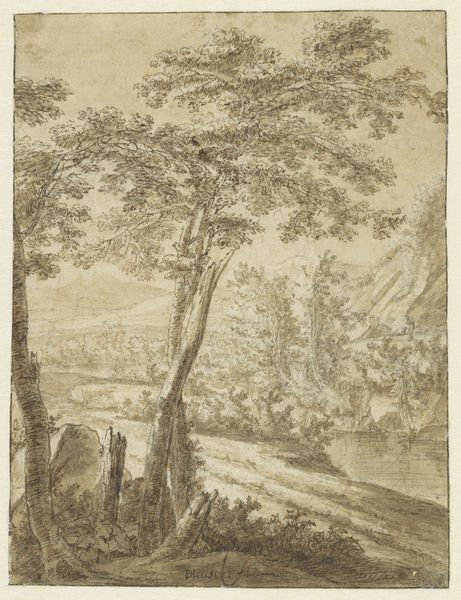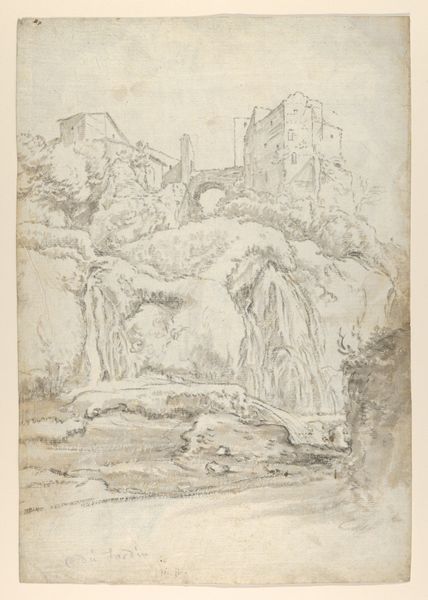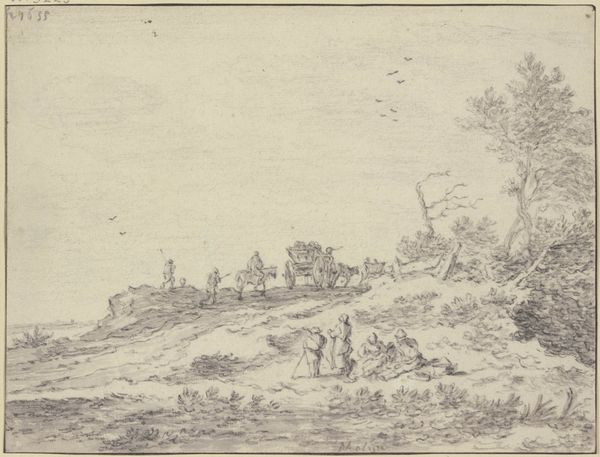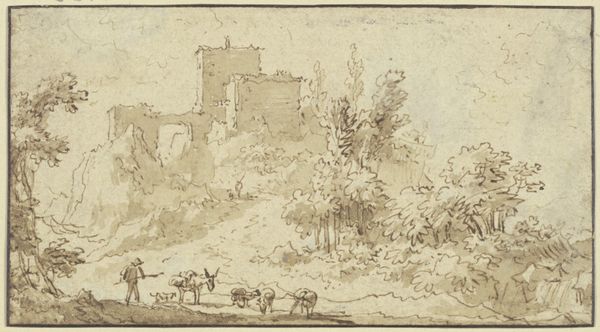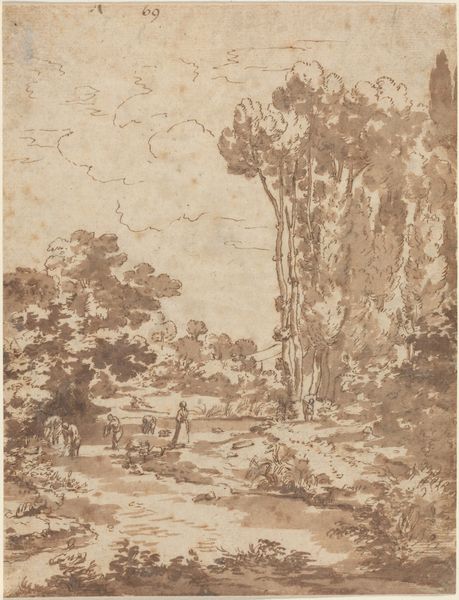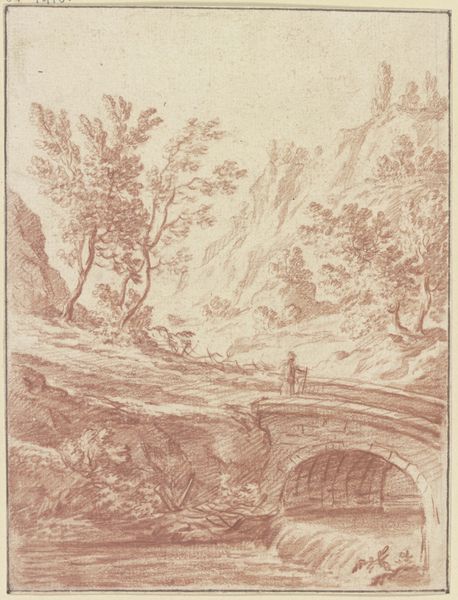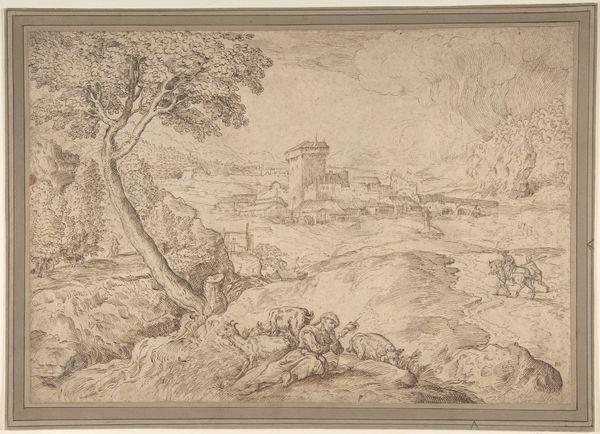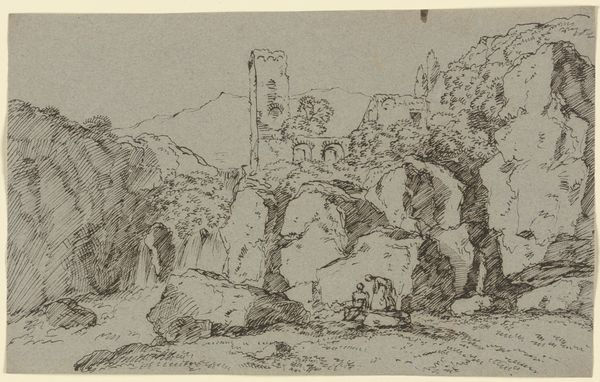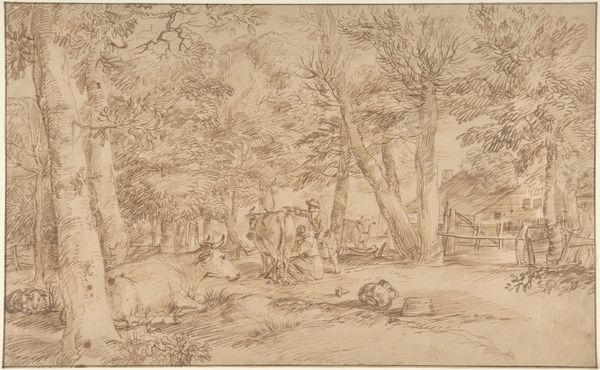
drawing, etching, paper, ink
#
drawing
#
baroque
#
etching
#
landscape
#
etching
#
paper
#
ink
Copyright: Public Domain
Editor: Here we have a delicate ink and etching on paper, titled "Burgruine, rechts ein hoher Steg, ein Bauer tränkt seine Pferde," or "Ruined Castle, with a High Bridge on the Right, a Farmer Watering his Horses," by Nicolaes Berchem, housed right here in the Städel Museum. The landscape feels serene, almost dreamlike. How do you interpret this work? Curator: I see here the artist's clear interest in the social landscape of production. Consider the etcher’s labor, the repeated, meticulous marks he or an assistant had to make. These lines translate a lived reality. A farmer and his livestock occupy the foreground; a ruin sits further back. Editor: I suppose I hadn't thought of the labor involved. The etching seems so light and airy. Curator: Exactly! The effect belies the process. Consider the materials: ink, paper, and the tools of etching. The value of each of these materials at the time of its making shapes the final form we see. Note, also, how the 'high art' landscape integrates everyday labor of working animals, seemingly without judgment. It blends aristocratic desires with more commonplace toil. How do those relationships strike you? Editor: So, it's not just about a pretty scene, but about acknowledging the different levels of society and how they come together? Curator: Precisely! The consumption of these idyllic images must have spoken volumes, considering where and how landscapes function culturally to shape our own present labor. Editor: I had no idea there was so much beneath the surface! Thanks to you, I won't look at landscapes the same way. Curator: Likewise. Considering art through its materials always brings a new perspective, it reveals deeper meanings within the art objects that might otherwise go unseen.
Comments
No comments
Be the first to comment and join the conversation on the ultimate creative platform.
